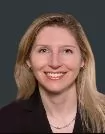In May 2015, we reported on proposals by the Securities and Exchange Commission to expand public disclosures by registered investment advisers ("RIAs") of various aspects of their separately managed accounts ("SMA") businesses. The SEC also proposed to (i) expand other information required of RIAs and exempt reporting advisers on their Form ADV filings, (ii) formalize its "umbrella registration" procedures for related investment advisers, (iii) amend certain books and records rules under the Investment Advisers Act of 1940 and (iv) make related technical changes to Form ADV and other Advisers Act rules. Notwithstanding a number of strongly stated industry concerns, the SEC voted on August 25, 2016 to adopt these Form ADV and rule amendments essentially as proposed.
The new requirements take effect sixty days after publication in the Federal Register, but compliance will be delayed to October 1, 2017 to permit IARD (the agency's investment adviser reporting system) to be reprogrammed and to allow firms additional time for data collection and planning. The October 1, 2017 compliance date means that many investment advisers will not need to make the new Form ADV disclosures until their regular 2018 annual update filings are due.
Separately Managed Accounts
As we previously reported, the primary goal of the rulemaking was to bring disclosure of key aspects of an investment adviser's SMA business up to a level comparable with the private fund data currently collected by the agency. Unlike the private fund sections of Form ADV, however, SMA disclosures will be imposed only on RIAs, rather than upon exempt reporting advisers as well. The most controversial aspect of the proposed SMA disclosures was the fact that an individual RIA's data would be publicly available. That has been largely preserved in the final rules, albeit with some attempts by the SEC to soften the requirements at the edges. In particular:
- RIAs will report the approximate percentage of SMA Regulatory Assets Under Management ("RAUM") invested in twelve1 asset categories. A new instruction will confirm that RIAs may use their own internal methodologies in categorizing investment assets. The SEC also stressed that RIAs should not look through investments by SMAs in investment funds to categorize the underlying fund assets; the SEC wants to understand the extent to which SMAs are invested in investment funds as well as in other asset classes.
- The SEC declined to define "separately managed accounts."2 However, the SEC clarified that sub-advisers to SMAs need only report about the portion of the SMAs that they advise.
- The minimum threshold proposed by the SEC for reporting the use of borrowings and derivatives on behalf of SMAs has been increased in the final rule from RIAs with $150 million SMA RAUM to RIAs with $500 million SMA RAUM. RIAs with SMA RAUM ranging from $500 million to $10 billion will report, on an annual basis, the amount of SMA RAUM3 and the dollar amount4 of borrowings attributable to those assets that correspond to three levels of gross notional exposures.5 RIAs with SMA RAUM in excess of $10 billion will report, on an annual basis, both mid-year and end of year data with regard to borrowings and, in addition, the gross notional value of six categories of derivatives6 attributable to those assets that correspond to the three levels of gross notional exposure. As in the proposal, RIAs may limit reporting to SMAs with minimum RAUM of at least $10 million each, although the SEC acknowledges that for some RIAs the exclusion of a segment of their SMA data may be more costly than its inclusion.
- The SEC maintained the requirement for identification of custodians that account for at least ten percent of an RIA's SMA RAUM and the amount of the RIA's SMA RAUM held at each such custodian.
- The SEC stood firm against more general objections to public disclosure of an RIA's SMA business data. The SEC discounted concerns expressed by commenters with respect to identification of clients or disclosure of confidential and proprietary investment strategies, emphasizing instead the need to enhance the SEC's risk assessment and monitoring activities, which the agency says are important and inure to the benefit of investors.
- The SEC also stood firm on required disclosure by non-US investment advisers of SMA data relating to non-US advisory clients.
Other New Disclosure Requirements
The other proposals made by the SEC in May 2015 remained largely unchanged:
- Revised Form ADV will require expanded identification data with respect to RIAs and exempt reporting advisers, including Central Index Key (CIK) numbers, websites, social media platforms,7 offices of the investment adviser with related employee and investment activity information, employed or outsourced status of chief compliance officers and assets of investment advisers within specified ranges.
- RIAs will be required to report precise numbers, rather than ranges, for three data points—the number of advisory clients, the types of advisory clients and RAUM attributable to client types.
- Revised Form ADV will codify permitted umbrella registration procedures for private fund advisers which operate a single advisory business through multiple legal entities (which we further describe below). While many in the industry lobbied for an extension of these procedures to benefit exempt reporting advisers and non-US firms, the final rules explicitly apply only to advisers related to a US RIA.
- Amended Advisers Act Rule 204-2 will tighten recordkeeping requirements concerning performance in two ways: by retention of records supporting performance claims in communications with any person (rather than the current ten person requirement) and by retention of written communications relating to the performance or rate of return of any or all SMAs or of any or all securities recommendations.
Umbrella Registration As noted above, the SEC is codifying existing staff guidance which permits private fund advisers organized as a single group of related entities to register and report on a single Form ADV. While many in the industry lobbied for an extension of these procedures to benefit exempt reporting advisers and non-US firms, the final rules explicitly apply only to advisers related to a US RIA.
The umbrella registration provisions allow related entities to share a single SEC registration and contemplate a "filing adviser" that is generally the principal entity being registered, together with one or more related firms referred to by the form as "relying advisers." Umbrella registration is subject to certain conditions as follows:
- The filing adviser and each relying adviser advise only private funds and clients in separately managed accounts that are qualified clients (as defined in rule 205-3 under the Advisers Act) and are otherwise eligible to invest in the private funds;
- The filing adviser has its principal office and place of business in the United States;
- Each relying adviser, its employees and the persons acting on its behalf are subject to the filing adviser's supervision and control and, therefore, each relying adviser, its employees and the persons acting on its behalf are "persons associated with" the filing adviser (as defined in section 202(a)(17) of the Advisers Act);
- The advisory activities of each relying adviser are subject to the Advisers Act and the rules thereunder and each relying adviser is subject to examination by the Commission; and
- The filing adviser and each relying adviser operate under a single code of ethics adopted in accordance with rule 204A-1 under the Advisers Act and a single set of written policies and procedures adopted and implemented in accordance with rule 206(4)-(7) under the Advisers Act and administered by a single chief compliance officer in accordance with that rule.
While umbrella registration has been in place in substantially the manner just described for some time, Form ADV itself was not designed to describe multiple advisers. Instead, a variety of ad hoc approaches to fitting related advisers into the form were developed by different filers over time. To address the resulting lack of standardization, the SEC has added a new Schedule R to Form ADV, to be completed separately for each relying adviser that consolidates identifying information, the basis for registration, the form of organization and information pertaining to ownership and control persons.
Outline of Changes to Form ADV
| Affected
Provision of Form ADV |
Current
Requirement |
Amended
Requirement |
| Item
1 |
Requires an adviser to
provide a Central Index Key number (CIK number) only if the adviser
is a public reporting company under Sections 12 or 15(d) of the
Securities Exchange Act of 1934. |
Removes this question
and adds a question that requires an adviser to provide all of its
CIK numbers if it has one or more such numbers assigned. This would
apply to all advisers regardless of public reporting company
status. |
| Item 1.I. and
Section 1.I. of Schedule D |
Ask whether an adviser
has one or more websites and Section 1.I. of Schedule D requests
the website address. |
Amend Item 1.I. to ask
whether the adviser has one or more websites or websites or
accounts for social media platforms, such as Twitter, Facebook and
LinkedIn, and request the social media addresses in addition to the
adviser's website address in Section 1.I. of Schedule D. The
required reporting is limited to accounts on social media platforms
where the adviser controls the content. |
| Item 1.F. of
Part 1A and Section 1.F. of Schedule D |
Require an adviser to
provide contact and other information about its principal office
and place of business and, if an adviser conducts advisory
activities from more than one location, about its largest five
offices in terms of number of employees. |
Require an adviser to
provide the total number of offices at which it conducts investment
advisory business and to provide information in Schedule D about
the 25 largest offices in terms of number of employees. Require an adviser to report each office's CRD branch number (if applicable) and the number of employees who perform advisory functions from each office, identify from a list of securities-related activities the business activities conducted from each office and describe any other investment-related business conducted from each office. |
| Item
1.J. |
Requires each adviser to
provide the name and contact information for the adviser's
chief compliance officer. |
Requires that an adviser
report whether its chief compliance officer is compensated or
employed by any person other than the adviser (or a related person
of the adviser) for providing chief compliance officer services and
if so, to report the name and IRS Employer Identification Number (if any) of that other person. |
| Item
1.O. |
Requires an adviser to
check a box to indicate if it has balance sheet assets of $1
billion or more (very few advisers find it necessary to check this
box). |
Requires an adviser with
balance sheet assets of $1 billion or more to report its balance
sheet assets within specified ranges. |
| Item
5 |
Requires an adviser to
provide approximate ranges for three data points relating to its
advisory business: number of clients, types of clients and RAUM
attributable to client types. |
Requires an adviser to
report all such data with more precision. Also requires that an
adviser would:
|
| Section 5.K.(1)
of Schedule D |
N/A (new section
added) |
Requires advisers to
report the approximate percentage of SMA RAUM that are invested in
twelve broad asset categories. Advisers with at least $10 billion
in RAUM attributable to SMAs will report, on an annual basis, both
mid-year and end of year percentages while advisers with less than
$10 billion but at least $500 million in RAUM attributable to SMAs
will report only end of year percentages. Advisers may use their
own internal methodologies and the conventions of their service
providers in determining how to categorize assets. |
| Section 5.K.(2)
of Schedule D |
N/A (new section
added) |
Requires advisers to
SMAs to report information regarding the use of borrowings and
derivatives in those accounts. Advisers with at least $500 million but less than $10 billion in SMA RAUM will be required to report the amount of SMA RAUM and the dollar amount of borrowings attributable to those assets that correspond to three levels of gross notional exposures as of year-end. Advisers with at least $10 billion in SMA RAUM will be required to report the foregoing information as well as the derivative exposures across six derivatives categories on an annual basis, including, in each case, both mid-year and end of year data. Advisers may limit their reporting to individual accounts of at least $10 million. |
| Section 5.K.(3)
of Schedule D |
N/A (new section
added) |
Requires advisers to
identify any custodians that account for at least ten percent of
SMA RAUM and the amount of the adviser's RAUM attributable to
SMAs held at the custodian. |
| Item 5.I. of Part 1A and Section 5.I.(2) of Schedule D | Require an adviser to
identify whether it acts as a sponsor or adviser to wrap accounts
and, if so, list the name and sponsor of each wrap account |
Require that an adviser
would identify both whether it acts as a sponsor or adviser to wrap
accounts and the RAUM attributable to those accounts. |
| Section 5.G.(3) of Schedule D | Requires the SEC File
Number for registered investment companies and business development
companies advised by the adviser. |
Requires that an adviser
also would report RAUM attributable to all "parallel managed
accounts" related to a registered investment company or
business development company advised by the adviser. |
| Section 7.B.(1) of Schedule D | Asks various questions
about private funds advised by the adviser. |
In addition to numerous
clarifying amendments, a new question requests the legal entity
identifier, if any, for a private-fund custodian that is not a
broker-dealer or that is a broker-dealer but does not have an SEC
registration number. |
| Item 8.H. | Asks whether the adviser
or any related person directly or indirectly compensates any person
for client referrals. |
Asks separately whether
any third party is so compensated and whether any employee of the
adviser or a related person is so compensated. |
| Section 9.C. of Schedule D | Requests information
about the independent public accountant that performs surprise
custody rule examinations. |
Also requests the Public
Company Accounting Oversight Board (PCAOB) registration number for
the accountant. |
Advisers Act Rule Amendments
The SEC is adopting two amendments to Advisers Act Rule 204-2, the books and records rule, which requires investment advisers to maintain additional materials related to the calculation and distribution of performance information.
Rule 204-2(a)(16) is amended such that advisers are required to maintain records supporting performance claims in communications that are distributed or circulated to any single person, instead of the original criteria of ten or more persons.
Rule 204-2(a)(7) is amended such that advisers are required to maintain originals of all written communications received and copies of written communications sent by an investment adviser relating to the performance or rate of return of any or all managed accounts or securities recommendations. Previously, only certain categories of written communications received and copies of written communications sent by such advisers needed to be maintained.
Technical amendments to rules under Sections 202, 203, 203A and 204 have been adopted to remove transition provisions that have been completed or are no longer applicable.
Footnotes
1 The SEC added two new categories—"Cash and Cash Equivalents" and "Non-Exchange-Traded Equity Securities"—to the ten categories which were originally proposed.
2 A new instruction clarifies that RAUM attributed to investment companies, business development companies or other pooled investment vehicles should not be included in the SMA RAUM reported by an RIA.
3 The proposal would have required reports based on SMA net asset value, rather than RAUM.
4 The proposal would have required borrowing data based on weighted average amount.
5 The three levels of gross notional exposure are (i) less than 10%, (ii) 10% to 149% and (iii) 150% or more. The SEC reduced the number of levels from four to three and eliminated the proposal to require disclosure of the number of SMAs managed by the RIA at each level.
6 The SEC declined to define "derivatives," as requested by several commenters. The SEC clarified that interest rate derivatives should be presented in terms of ten-year bond equivalents, as required by Form PF. The SEC also confirmed that the term "listed equity derivatives" refers to exposures to derivatives for which the underlying asset is listed equities.
7 The SEC received extensive commentary with regard to disclosure of social media platforms and made several concessions, including the limitation of social media platform disclosure to those platforms controlled by the investment adviser.
The content of this article is intended to provide a general guide to the subject matter. Specialist advice should be sought about your specific circumstances.









